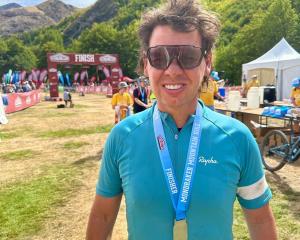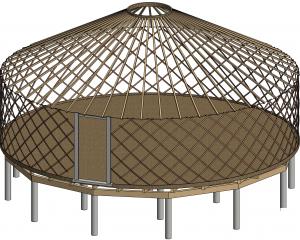The very fine algae seems not to affect older houses and appliances, where, unfiltered, it passes straight through the plumbing system.
In those situations, the tasteless algae is not visible in a glass of water.
But in newly built or renovated homes fitted with modern appliances with fine mesh filters, the algae can soon accumulate and become an unsightly brown mush in shower heads and basin plug holes.
The weather and lake conditions are believed to be factors behind variations in build-up from one summer to the next.
More nutrients in the lake, possibly through climate change, has been suggested as an explanation for algae bloom.
The council spent $66,000 replacing coarse intake screens with finer mesh screens in 2009 and more intake work will start soon.
The replacement mesh screens appear not to have made a difference to affected householders.
The water mains were flushed last summer, but the algae just built up again.
Tests have concluded the algae is not toxic and there are no water quality issues.
The tests identified 13 different types of algae in Lake Wanaka, so the council is analysing which ones are the culprits and what the best solutions could be.
Deep-water sampling took place in May to determine when the algae occurs, its type and structure and the depth and temperature at which it grows.
The tests showed the algae is present in both deep and shallow water all year round.
It was not clear whether the deep water algae was actually growing there or was dead and had sunk; more testing is to take place this summer.
Meanwhile, a chorus of complaints to the media and plumbers from those worst affected has continued, but the council had only recorded 17 complaints over four years by May.
That low number surprised Wanaka councillors and sparked a meeting with plumbers to learn more about the extent of the problem.
All along, council officers and Wanaka Community Board chairman Lyal Cocks have encouraged householders to manage the situation until a solution can be found.
The council says people noticing reduced water pressure in their homes should clean their filters or get a plumber to do it for them.
Primary filters could also be installed near the toby (meter tap) at the property boundary, with plumbing costs likely to be several hundred dollars.
An information flyer has also been prepared, and is available from the council offices, explaining the problem and giving advice on how to deal with filters.
Council officers say a detailed filtration system at the cost of "several millions" may be the only answer.
Water operations manager Martin Ellis said earlier this year most of the Wanaka community would have to indicate through community consultation that was what they wanted.
Once such a system was installed, there would be ongoing maintenance costs.
It might be more cost effective for the council to help on a case-by-case basis, Mr Ellis suggested.











